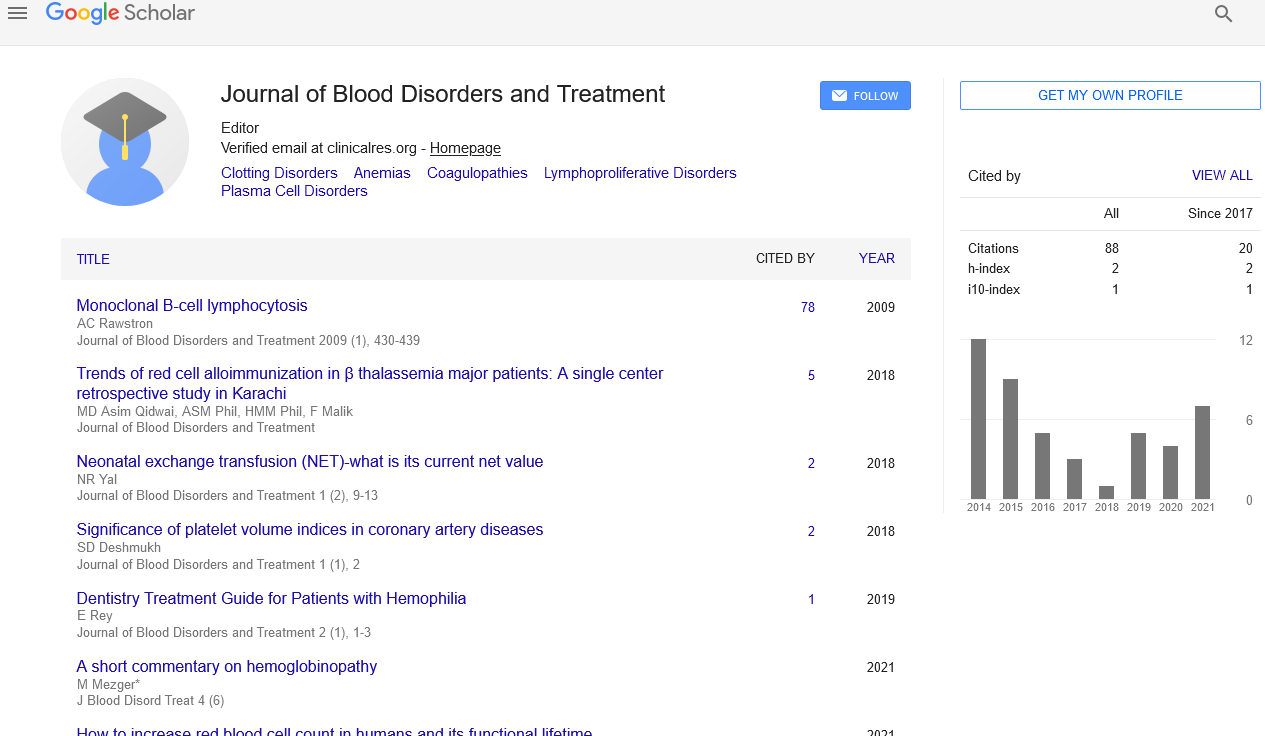Overview of the disease: Lupus
Received: 08-May-2022, Manuscript No. PULJBDT-22-5101; Editor assigned: 10-May-2022, Pre QC No. PULJBDT-22-5101; Reviewed: 17-May-2022 QC No. PULJBDT-22-5101; Revised: 19-May-2022, Manuscript No. PULJBDT-22-5101; Published: 27-May-2022, DOI: 10.37532/puljbdt.2022.5(3)21
This open-access article is distributed under the terms of the Creative Commons Attribution Non-Commercial License (CC BY-NC) (http://creativecommons.org/licenses/by-nc/4.0/), which permits reuse, distribution and reproduction of the article, provided that the original work is properly cited and the reuse is restricted to noncommercial purposes. For commercial reuse, contact reprints@pulsus.com
Abstract
Due to its impact on several organ systems, lupus is a chronic inflammatory autoimmune disease with a wide spectrum of clinical manifestations. Neonatal, discoid, drug-induced, and Systemic Lupus Erythematosus (SLE), which affects the majority of patients, are the four basic kinds of lupus. Due to aberrant immunological function, the development of autoantibodies, and the subsequent generation of immune complexes that may negatively impact healthy tissue, patients with lupus have a loss of self-tolerance.
Key Words
Erythematosus; Lupus; Antibodies
1.Introduction
Multisystemic inflammation brought on by aberrant immune activity is a symptom of lupus. Patients occasionally experience mild to severe flares, or there may be no visible symptoms or signs at all. Neonatal And Paediatric Lupus Erythematosus (NLE), Discoid Lupus Erythematosus (DLE), Drug-Induced Lupus (DIL), and Systemic Lupus Erythematosus (SLE) are the four basic kinds of lupus. As a result of earlier disease discovery and advancements in therapy, fatality rates linked to SLE have decreased in recent decades. In contrast to three decades ago, when the 10 year average survival rate was 76%, it is today around 90%. Infectious problems brought on by immunosuppressive medications and early active SLE is the most frequent causes of death. Accelerated atherosclerosis connected to either the condition or the treatment is a frequent reason for SLE related late death.
Pathophysiology
SLE is a chronic disease that damages numerous organ systems, mostly as a result of the production and buildup of immune complexes and autoantibodies, which eventually results in organ damage. These antibodies against antigens that are exposed on the surface of apoptotic cells are produced more frequently by hyperactive B cells as a result of T-cell and antigen stimulation. Antigen-Presenting Cells (APCs) and T lymphocytes are thought to interact to cause SLE. When the T-cell receptor attaches to the Major Histocompatibility Complex (MHC) component of the APC, cytokines may be released, inflammation may occur, and B-cells may be stimulated. SLE is also characterised by the stimulation of B-cell division and the generation of tissue-damaging immunoglobulin G (IgG) autoantibodies. Contrary to healthy adults, autoantigen-specific T cells and B cells may also interact and result in the production of dangerous autoantibodies.
Clinical Presentation
Given the variety of organ systems that SLE can impact, the disease's presentation can be complicated. Patients go through various levels of disease flare-ups as well as remission intervals. Even while some signs and symptoms of SLE are typical, each patient has their own set of distinguishing characteristics.
Fever, exhaustion, and weight loss are some of the general signs and symptoms of SLE. The pulmonary system, musculoskeletal system, and skin are the most commonly impacted systems. In addition to the central nervous system, SLE also has an impact on the cardiovascular, gastrointestinal, renal, and haematological systems (CNS). Pericarditis, myocarditis, endocarditis, and coronary artery disease are among the common cardiovascular consequences. Some SLE medications, such as immunosuppressants and corticosteroids, have been suggested to increase the risk of coronary artery disease in SLE patients in addition to the usual risk factors seen in the general population.
Diagnosis
SLE is diagnosed using clinical indications and symptoms, laboratory tests, and diagnostic procedures specific to each patient. An important tool in the evaluation of patients when SLE is suspected The diagnosis of SLE can be made with 95% specificity and 85% sensitivity if a patient exhibits four or more of the 11 criteria (either concurrently or at various times). However, a 2003 study that contrasted modified weighted criteria with ACR criteria showed a better sensitivity in favour of the weighted criteria (sensitivity, 90.3 % vs. 86.5 % ; specificity, 60.4 % vs. 71.9 % ). To address the indications and symptoms specific to each patient, diagnostic testing may be customised. Joint involvement can be evaluated with radiography, kidney size and impairment with renal ultrasound, pulmonary involvement with chest radiography, and chest discomfort with electrocardiography.
The two substances most frequently linked to the emergence of DIL are procainamide and hydralazine. If a patient took procainamide for more than two years, the majority of them will test positive for ANAs; this is particularly true of patients who have the slow acetylator phenotype. After a year of treatment, symptoms are thought to appear in up to one-third of procainamide users. Patients taking higher dosages of hydralazine (more than 200 mg per day), patients who are female, slow acetylators, and patients with specific genetic mutations should be especially concerned about the risk of DIL from hydralazine.





